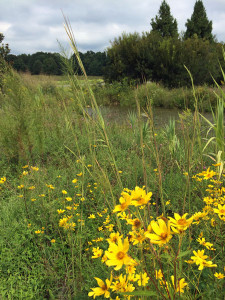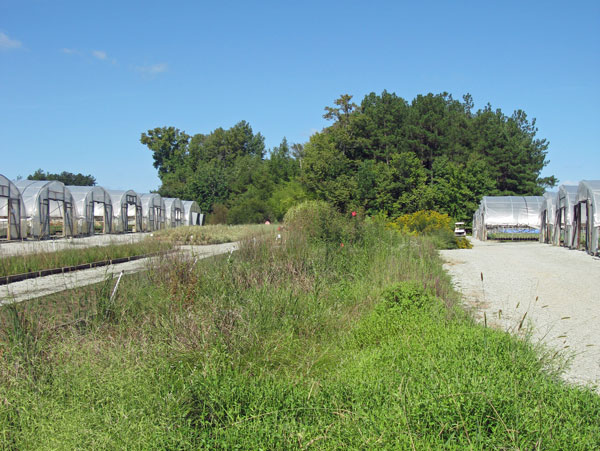Water Recycling at Hoffman Nursery
We’re doing our part to manage storm water wisely with a system that’s sustainable and ecologically sound. That’s where green infrastructure comes in.
Read PostJosh Quinlan, our Facilities and Water Management Coordinator, has been working with North Carolina Cooperative Extension agents and other experts to increase the efficiency of our water management system. We’ll be sharing our efforts here and in our e-newsletter from time to time.

We start with what’s been a part of our system for several years. Throughout our site, water is directed into a series of channels that are planted with grasses, sedges, and other herbaceous perennials. Called bioswales or biofiltration swales, these structures slow water flow and filter out pollutants. Slowing down the water allows for greater infiltration into the ground and return of water to the atmosphere through evapotranspiration. The idea is to treat the water before it reaches a river, pond, or stream.
Maintenance is Key
Because the bioswales are so important, they’re high on Josh’s list. He is making sure they’re maintained and working properly. The shape of the channel, dense plant cover, and the channel’s ability to remove pollutants must be maintained.
Josh will regularly remove invasive plant species and those that are too aggressive. He’ll make sure the plantings stay healthy, replace any that have declined, and add more plants when needed. Right now, we have grasses, sedges, and rushes, along with several native perennials (spp. of Lobelia, Vernonia, Solidago, Rudbeckia, Helianthus, and Eutrochium). We plan to increase the biodiversity of the plantings and build a thriving plant community in these bioswales. We love seeing the pollinators and other wild creatures in these areas.

The maintenance regimen will also include removal of debris or any blockages that occur to ensure that water flows freely. Josh will also make sure there aren’t any ruts or holes—these must be repaired if they’re found. In addition, sediment from runoff accumulates, so it has to be removed. It’s a big job, but keeping these channels in good working condition is critical for our system.
If you’d like to learn more about bioswales and similar structures, try these resources:
Get Current Availability: Excel Download |PDF Download